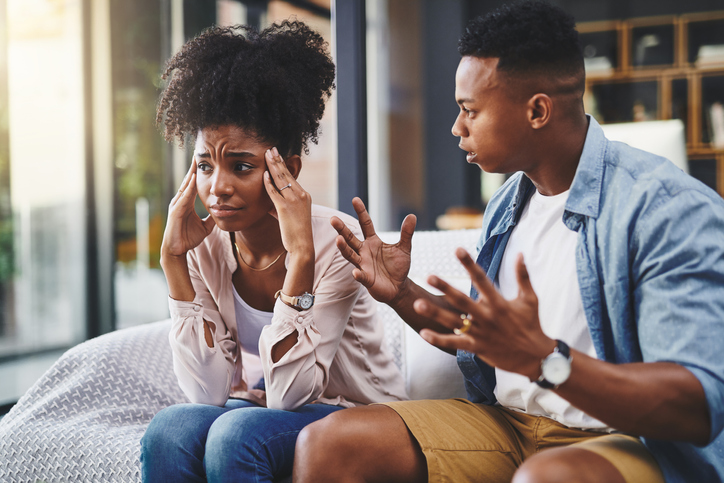
Source: Rowan Jordan / Getty
We all know the type. The dark, moody, broody, “complicated” type who gives off an appealing vibe that seems cool and desirable. This type, while mysterious and exciting, also comes with a lot of “issues” and many less than stellar personality traits. A lot of us are attracted to partners whom we perceive, conciously or subconciously, to be “projects.” By that I mean, we sense something broken or vulnerable in them and we want to “fix” or help them. So, we try to repair them and end up being broken ourselves in the process, left wondering why we keep doing this over and over again. To get to the bottom of this attraction to toxic partners, I reached out to Dr. Sarah Williams, a licensed psychotherapist and owner of Covenant Way Wellness, which offers clinical mental health therapy, creative therapy, hypnotherapy, yoga, women’s health, and specialized services for executive and celebrity clients via teletherapy, to begin to understand why we are drawn to toxic people.
Dr. Williams says to understand adult behavior in relationships, we must examine possibilities or ‘culprits’ for those choices that date back to when we were children.
“For instance, a childhood experience of trauma, abuse, and or neglect can be recreated as an attempt to heal the brokenness of childhood in adulthood,” she says. “As a result, you may unconsciously be attracted to and unconsciously attract toxic personalities.” Many times we are often seeking from new relationships closure for damage or trauma we experienced in previous relationships, including childhood relationships with parents or other family members. It is often said when discussing the relationships of people around us that “she married her father, or he married his mama.” There is clearly something to that.
So then the question becomes, how do we avoid falling into these negative patterns that result in us ending up with toxic partners? Are there warning signs or red flags we can look for to help us avoid toxic partners? Dr. Williams shared a lengthy list.
“Some of the warning signs are a consistent pattern of inconsistencies. A history of failed relationships, unexplained and frequent breakups, or to an extreme level, a criminal history of domestic violence, stalking, etc,” she says. “Another red flag may include exhibiting jealousy, wanting to isolate their partner from friends and family or a partner that is a loner themselves. Subtle and not so obvious warnings include unexplained absences or periods of limited communication. Unexplained absences may actually indicate the individual is hiding another relationship, substance abuse problem, mental health diagnosis, and/or criminal activity. Pay attention to your personal emotional barometer. A clear indication of a toxic partner is emotionally-laden experiences that require ‘recovery’ after spending time with your partner or the prevalence of more questions about their behavior than answers.”
As a clinically-trained social worker myself, I know from experience that being drawn to toxic partners is not really about the partner but as mentioned, rather about something unresolved within ourselves. Dr. Williams agreed and said that moving forward, “a healthy sense of self-worth and confidence is critical in formulating healthy relationships. First and foremost take the time to self-evaluate. By working with a trusted and competent licensed therapist, important answers and connections between childhood traumas and toxic relationships can be explored. As a licensed psychotherapist in working with clients, I encourage individual sessions designated for exploring childhood and family patterns. Often our adult decisions in choosing toxic partners can be traced to family patterns and origins.”
Now we know that we need to make time for some introspection and to examine our previous relationship patterns, and we know what red flags and signs to look for in potential partners, but what can we do to adapt our preferences to avoid toxic partners? Dr. Williams says the key is developing confidence in one’s ability to trust inner discernment.
“If we were to reflect upon patterns and behaviors that led to our connection to a toxic partner, it is possible we were not in the best place emotionally at the onset,” she says. “Perhaps self-esteem or confidence was lacking. Was unhealed trauma an issue? Or the possibility that our own depression, anxiety, or other disorder interfered with healthy decisions. By taking time for self-reflection as well as taking active steps in developing our spiritual health, we can increase self-awareness and discernment. Attending spiritual retreats, joining a support group, taking up a hobby, and participating in spiritually-enhancing activities are all examples of ways to add personal and emotional value, which decreases the possibility of choosing a toxic partner.”
Dr. Williams generously offered some final words of advice including that we have to be honest about the ways in which we enable toxic people to enter into our lives.
“Toxic partners do not operate in isolation. They generally have others that are willing to facilitate their toxicity. To that end, it is imperative to avoid relationships that mirror toxicity,” she says. “Keeping personal commitments that involve listening to your inner voice and seeking out assistance if questionable behaviors evolve. Remember to keep the focus on yourself and the personal growth needed to attract and be attracted to individuals that are healthy and encourage you to be your best self.”
If you would like to connect Dr. Williams, visit her website.


